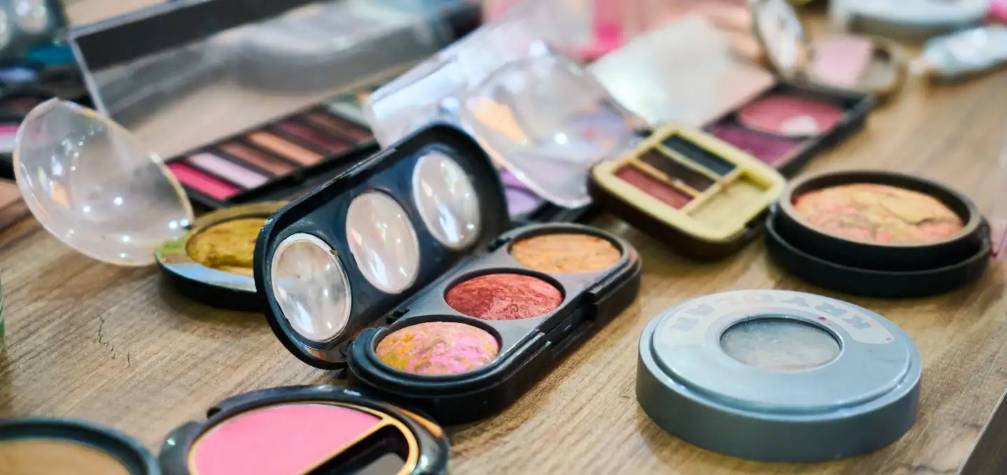How to Soothe and Apply Makeup on Inflamed Skin, According to Experts
3 min read
22 Mar 2025
Inflamed skin can be a challenging canvas for makeup application, as it requires a delicate touch to avoid exacerbating irritation or discomfort. Whether you're dealing with redness, acne, or other forms of skin inflammation, knowing how to soothe and apply makeup correctly is essential. In this guide, we will share expert tips and techniques for achieving a flawless makeup look while nurturing and calming inflamed skin.
Preparation is Key
Before applying makeup to inflamed skin, it's crucial to start with a clean and well-prepped canvas. Proper preparation can help minimize irritation and provide a smoother application.

Gentle Cleansing: Begin by cleansing your face with a mild, hydrating cleanser. Avoid harsh or abrasive products that could further irritate the skin. Pat your face dry gently with a clean, soft towel.
Moisturize: Apply a soothing, non-comedogenic moisturizer to create a barrier between your skin and makeup. Look for products containing ingredients like aloe vera, chamomile, or hyaluronic acid, which can help calm and hydrate inflamed skin.
Use a Primer: Opt for a makeup primer designed to address redness or inflammation. These products often contain green-tinted pigments that help neutralize redness.
Sunscreen: If you'll be exposed to the sun, apply a broad-spectrum sunscreen with at least SPF 30 to protect your skin from further damage.
Foundation and Concealer Tips
Choosing the right foundation and concealer is crucial when dealing with inflamed skin. Here's what the experts recommend:
Select the Right Formula: Look for foundations and concealers formulated for sensitive or acne-prone skin. Mineral-based makeup products can be a gentle choice, as they often contain fewer potential irritants.
Light Coverage: Avoid heavy, full-coverage foundations that can suffocate the skin. Opt for lightweight, buildable formulas that allow your skin to breathe.
Color Correcting: Consider using color-correcting products to counteract redness or discoloration. Green concealer can help neutralize red tones, while peach or salmon-toned concealers can camouflage dark circles.
Apply Sparingly: Use a light hand when applying foundation and concealer. Dab or gently pat the products onto the skin rather than rubbing or dragging.
Beauty Blender or Makeup Sponge: A damp makeup sponge can help blend products seamlessly and prevent cakiness. Make sure to clean your sponge regularly to avoid bacteria buildup.
Avoid Touching: Refrain from touching your face throughout the day to minimize further irritation and maintain the longevity of your makeup.
Eye Makeup and Eyebrows
The eye area can be particularly sensitive when dealing with skin inflammation. Follow these tips for applying eye makeup and grooming eyebrows:
Hypoallergenic Eyeshadows: Opt for hypoallergenic eyeshadows and eyeliners to reduce the risk of irritation. Cream-based eyeshadows can be gentler than powders.
Mascara and Eyeliner: Be cautious when applying mascara and eyeliner near the lash line. Avoid tugging or pulling on the eyelid. Use a gentle hand to prevent further irritation.
Eyebrow Grooming: If your eyebrows are inflamed, consider using a soothing brow gel instead of tweezing or waxing until the inflammation subsides.
Blush and Bronzer
Blush and bronzer can add a healthy glow to your complexion. Here's how to use them effectively on inflamed skin:
Cream Blush: Cream blushes tend to be more hydrating and blendable than powder blushes. Dab a small amount on the apples of your cheeks and blend gently with your fingers.
Bronzer Placement: If you're using bronzer, apply it strategically to areas where the skin is less inflamed, such as your temples and jawline. Avoid applying it directly to irritated areas.
Lip Products
Lip products can be a fun way to complete your makeup look. Here's how to care for your lips when they are inflamed:
Lip Balm: Apply a moisturizing lip balm to hydrate and soothe dry or chapped lips.
Lipstick Choice: Choose lipsticks with hydrating or satin finishes rather than matte formulas, which can be drying.
Lip Liner: If you use lip liner, select a gentle, creamy formula. Be careful not to overline your lips, as this can draw attention to inflammation.
Setting Your Makeup
Setting your makeup is essential to help it last throughout the day. Here's how to do it without irritating your skin:
Setting Spray: Use a setting spray to lock your makeup in place. Look for products that are alcohol-free and formulated for sensitive skin.
Blotting Papers: Keep blotting papers on hand to absorb excess oil without disturbing your makeup.
Avoid Powder Overload: Be cautious with setting powders, as they can emphasize dryness and make skin appear cakey. Use a light dusting only where necessary.
Removing Makeup Gently
At the end of the day, it's essential to remove your makeup gently to avoid further irritation. Here's how:
Micellar Water: Start with micellar water to dissolve makeup, including waterproof products.
Gentle Cleanser: Follow up with a gentle cleanser to remove any remaining traces of makeup and impurities.
Avoid Harsh Scrubbing: Do not scrub your face aggressively. Use soft, circular motions with your fingertips.
Moisturize: Apply a soothing, hydrating moisturizer to replenish your skin after makeup removal.
Conclusion
Soothing and applying makeup on inflamed skin requires a gentle and mindful approach. By selecting the right products, using light coverage, and following expert tips, you can achieve a flawless makeup look while caring for your sensitive skin. Remember that skincare should always come first, and when in doubt, consult a dermatologist or skincare professional for personalized advice on managing skin inflammation.


